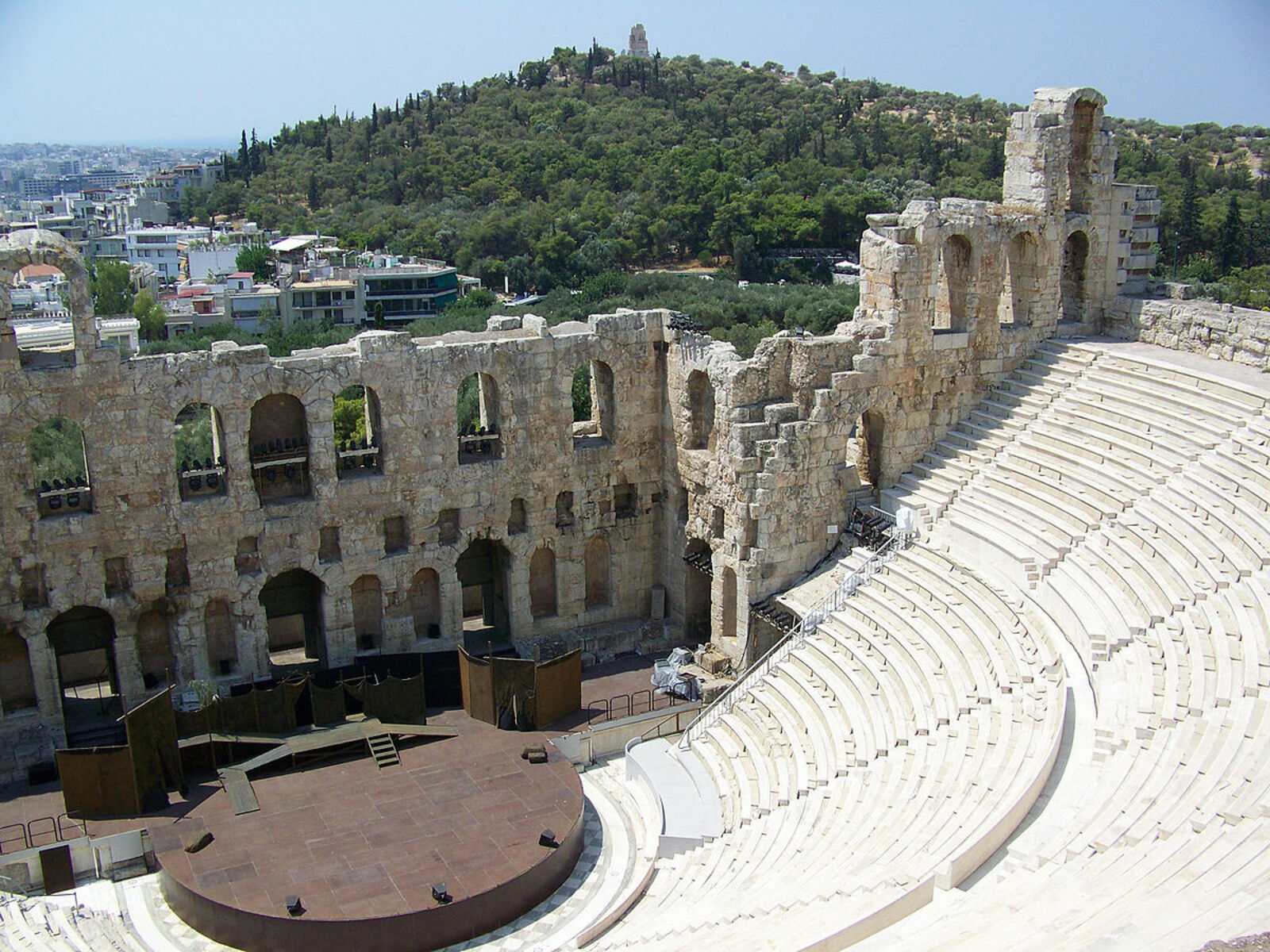You are now well on your way up the Acropolis of Athens, the most important of the three rocky hills in the historical center of the city. The Acropolis functioned as an ancient citadel, a fortress of the ancient city, towering over the Athenians and anyone else within Athens. We can only imagine the marvel that was the Acropolis of the early years, bathed in sunlight, surrounded by the sounds wafting over from the Agora. The hill of Acropolis contains a cluster of archaeological sites, as commissioned by Pericles, and the first one you encounter is the Odeon, or Theater, of Herodes Atticus. The location is one of the few sites that is used for its original purpose, that of entertainment, even to this day.
The structure lies on the southwest side of the Acropolis. Built in the Roman Era during the 2nd century AD, the theater was commissioned by Herodes Atticus in honor and memory of his wife, Aspasia Annia Regila. Herodes Atticus was a wealthy and influential member of Athenian aristocracy, with ties to the Roman Emperor himself. He was also cultivated, belonging to the movement of sophists, and served as a Roman senator. The following have been written to describe him: "patron of the arts and letters (and himself a writer and scholar of importance), public benefactor on an imperial scale, not only in Athens but elsewhere in Greece and Asia Minor, holder of many important posts, friend and kinsman of emperors."
Originally used as a music concert venue, the theater was built in a style which greatly facilitated the travelling and quality of sound. It operated for about 100 years, until the 3rd century AD, where it was destroyed, along with many other monuments, by -guess who- the Heruli. Afterwards, no one could recognize the magnificent Odeon, buried beneath rubble, dirt and stone. It was properly identified by English archaeologist Richard Chandler in the mid-18th century. After proper reconstruction and preservation, the Odeon is used for concerts to this day, especially during the Festival of Athens in the summer months.
The Odeon was not the only structure Herodes Atticus commissioned in his life, but it is safe to say that it was the one most based on sentimental reasons.
As for the object of that sentimentality, Regila was betrothed to Herodes Atticus and married him at the age of 14. She was appointed as a priestess of Demeter, the goddess of agriculture and became a benefactor of Attica like her husband. But tragedy struck once day. Regila was beaten and kicked to death by a freed slave of her husband's. Herod was overcome with grief, and did monumental efforts to honor her memory. On Regila's tomb, he ordered this inscription: “To the memory of Annia Regilla, wife of Herodes, the light and soul of the house, to whom these lands once belonged”.
Image link: https://commons.wikimedia.org/wiki/File:Acropolis_-_Herodes_Atticus_theatre.jpg

